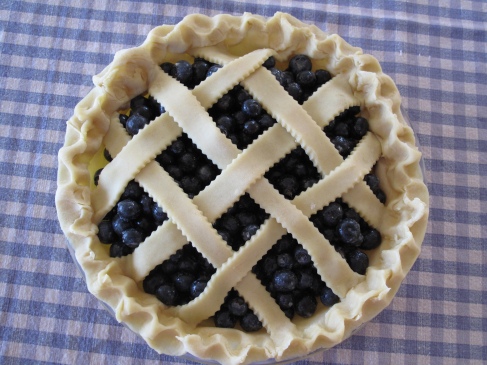By Janice Cook Knight
Author of the Follow Your Heart Cookbook, and Follow Your Heart’s Vegetarian Soup Cookbook, http://www.amazon.com/Janice-Cook Knight/e/B001IXNSAM
Thank you to Janet Lucy, writer and writing teacher extraordinaire, who invited me to join this Writing Process Blog Tour (http://janetlucyink.com/my-writing-process/).
I’ll be answering four questions:
What am I working on?
How does my work differ from others of its genre?
Why do I write what I do?
And, How does my writing process work?
What am I working on?
For several years now I’ve been writing a memoir about my home and family. While the book includes some of the history of our nearly 100-year-old house, the main exploration is my lifelong obsession with houses, and why they are so important to me. At the same time, it is also a love story.
How does my work differ from others of its genre?
That’s a hard question. I have read a whole lot of books about writer’s relationships with their homes, and because of this I have felt in good company, because many other writers are similarly obsessed. But that being said, each of us is unique, and the places we live and what they mean to us are unique. One way my book differs is its southern California perspective. I grew up as a “Valley Girl,” in a very suburban Los Angeles setting, yet in spite of that or maybe because of that, I developed a deep appreciation for nature: wild nature, and especially, gardens. In the suburbs nature was not exactly treated respectfully most of the time; in fact, it was just the opposite.
Now I live in Santa Barbara, and in this smaller, beautiful environment, the lines of the city and the natural world are more blended, and I like that. I notice that I like to write about farmers working within or near cities, and homeowners growing multiple fruit trees on small suburban lots. I am always looking for interesting possibilities. Also, food is a big part of my writing, because I’ve worked in the natural food business for many years. My characters can’t help thinking about some aspect of food – growing it, eating it, talking about it.
Why do I write what I do?
I write because I want to discover what I’m really thinking; I write because I want to share my discoveries with others; and I write to preserve things so they won’t be lost, whether that be recipes, or someone’s story. I wrote the cookbooks for others, but I wrote them for myself too, so those recipes and those taste experiences could be repeated. It’s an amazing process to be able to recreate a recipe again and again. It’s like invoking history. And telling this story about my home and my husband and family allows me to keep that story alive, and understand it, and share it with others.
How does your writing process work?
I’m sporadic. Sometimes I write morning pages, sometimes I get to them in the afternoon, and sometimes I miss several days. Other days I write a lot and intensely. I usually begin a new piece or a new chapter in longhand. I like the pen-to-paper thing. Once a piece makes it onto my computer, though, I edit it and continue any more drafts on the computer almost exclusively.
Often I have to leave my house to write, especially if I’m working on new material. I love the public library. No coffee or tea to fuss with like at a café, just quiet and a desk. The library forces my hand, keeps me from the distractions of ringing phones, pets, husband, the refrigerator, etc. I get quickly into the working zone. Sometimes I work from an extra bedroom of our house, my son’s old room, a plain room with a long desk that is small and quiet.
If I’m working on a short piece or an article, I can usually work from my office. I lock myself in there with snacks and tea. The deadline really helps. Writing the memoir is much more nebulous, as the deadlines are self-imposed.
I like to give myself at least a two-hour chunk of time to write. Anything less than that and it’s harder to drop into the zone.
The Writing Process Blog Tour: Who is next to blog for June 2?
Below are the bios for three fascinating authors, with links to their websites:
Brecia Kralovic-Logan is a passionate champion of creativity who has spent the last 30 years helping people of all ages to embrace and express their unique individuality. Certified as a creativity coach, she helps her clients access their inner knowing, embrace their passions, and expand into their creative vision of joy and fulfillment. Her zeal for color, texture, and movement has driven her own life as an artist and taken her from New York, to London, to Kyoto exploring various facets of the art world. Applying her studies of Depth Psychology to her work as an arts educator, Kralovic-Logan teaches and lectures at international conferences, museums, colleges, and for arts organizations. She is the owner of pebble in the pond art studio in Santa Barbara, where she offers her national coaching services, writes, teaches and creates her award winning art. Her book, The Spiral of Creativity is available on Amazon.
For more information about Brecia’s work, visit breciacreative.com or spiralofcreativity.com
Connie Tuttle was unexpectedly called to the ministry at age twenty-five. She is the founding pastor of the Circle of Grace Church in Atlanta, Georgia. The manuscript of her memoir, A Gracious Heresy, is currently with her agent, seeking publication. Visit Connie’s website: http://connietuttle.com/writer/
Nancy Black has been writing for publication for thirty-five years. Together with her husband Isaac Hernandez, she founded Mercury Press International, a media agency that reaches millions of readers, providing words, images and video to magazines, books, periodicals and commercial clients in more than thirty different countries. They serve as correspondents for El Mundo, Spain’s second largest national newspaper and the world’s largest Spanish-language online periodical. Nancy writes a series on inspiring women for Yo Dona Magazine in Spain.
Nancy recently took over her late mother Linda Black’s celebrated astrology column for Tribune Media Services. It was Linda’s wish that her daughter continue her life’s work, and Nancy is honored to carry on her mother’s legacy. Visit Nancy’s websites at: http://nancyblack.com, and LindaBlack.com.








